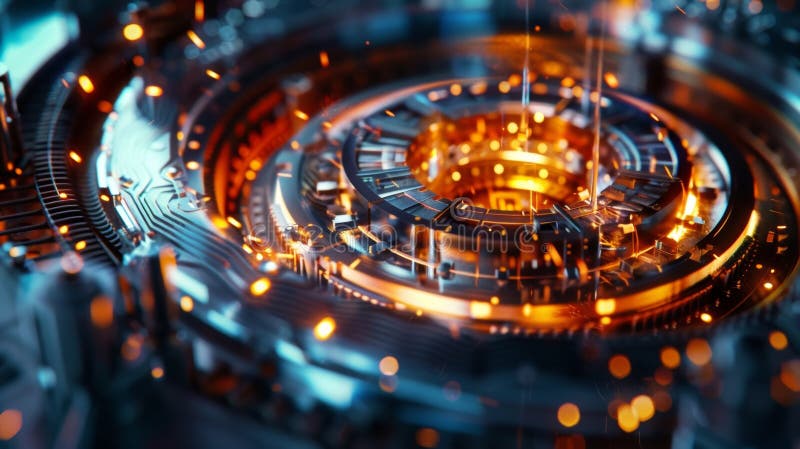Josephson Dreams: Condensates Assemble into Superconducting Arrays
The interaction of macroscopic quantum phenomena gives rise to remarkable behaviors in superconducting devices, and among the myriad phenomena observed, the Josephson effect stands out with its intricate dance of phase coherence and tunneling. Could we envision a realm where superconducting condensates converge into sophisticated arrays? What challenges might arise in harnessing such assemblies for practical applications? The pursuit of harnessing these enigmatic condensates not only brings excitement but also poses a formidable challenge to contemporary physics and engineering.
The Josephson Effect: A Brief Overview
The Josephson effect, conceived by the physicist Brian D. Josephson in 1962, elucidates the intricacies of charge carriers tunneling through a superconducting barrier. This phenomenon manifests in two principal forms: the DC Josephson effect, where a direct current flows across a junction without an applied voltage, and the AC Josephson effect, characterized by an oscillating current influenced by an external electromagnetic field. The theoretical underpinnings of the Josephson effect rest upon the principles of quantum mechanics and the coherence of the superconducting wavefunction.
At the core of the Josephson effect lie Cooper pairs—electron pairs that condense into a collective ground state—facilitating this extraordinary behavior. The interplay between Cooper pair tunneling and phase coherence not only gives rise to the Josephson current but also sparks profound implications in various fields, including quantum computing, metrology, and the development of highly sensitive sensors.
Superconducting Condensates and Cooper Pair Dynamics
Superconducting condensates epitomize the collective behavior of Cooper pairs, emerging from the profound principle of symmetry breaking in the Bardeen-Cooper-Schrieffer (BCS) theory. This theory describes how at sufficiently low temperatures, electrons with opposite spins and momenta form pairs, resulting in a new quantum state that exhibits zero electrical resistance.
In a superconducting system, these condensates can interact and form arrays of superconducting elements, promoting novel quantum behavior. Herein lies the crux of our inquiry: how do we assemble these condensates into coherent arrays, and what playfulness of quantum mechanics might shape our understanding of this assembly?
The Architecture of Superconducting Arrays
Constructing superconducting arrays involves integrating numerous superconducting elements into a coherent structure. These elements can include Josephson junctions, superconducting qubits, and various two-dimensional materials exhibiting superconductivity. The architecture must be meticulously designed to maximize coupling, minimize decoherence, and promote the stability of the entire system.
The potential arrangement of these arrays gives rise to rich phenomenology. Consideration must be given to their dimensionality—one-dimensional chains, two-dimensional lattices, or even three-dimensional matrices might yield different quantum states. Arrays can exhibit topological phenomena, such as anyonic statistics or Majorana modes, opening avenues for fault-tolerant quantum computation.
Nonetheless, the construction of these arrays is fraught with challenges. The fabrication processes must achieve atomic precision, necessitating sophisticated techniques like molecular beam epitaxy or atomic layer deposition. Furthermore, ensuring uniformity in material properties across the array is critical to minimize defects that could disrupt quantum coherence.
The Role of Noise and Decoherence
A major hurdle to assembling superconducting condensates into functional arrays lies in the persistent problem of noise and decoherence. Despite the remarkable coherence times observed in certain superconducting systems, environmental interactions inevitably threaten the fragile quantum states. Phonon interactions, electromagnetic noise, and thermal fluctuations contribute to decoherence processes that can drastically impair the functionality of superconducting circuits.
To combat these destructive influences, cutting-edge techniques are being explored. From employing cryogenic environments to harnessing error-correcting schemes in quantum computing, researchers are developing strategies to enhance the resilience of superconducting arrays. The question emerges: can we create platforms that endure chaotic noise yet maintain phase coherence throughout the assembly?
Applications of Superconducting Arrays
The potential applications of superconducting arrays are vast and varied. In quantum computing, arrays of superconducting qubits exhibit exceptional promise. Their capacity for entanglement and superposition allows the execution of quantum algorithms that surpass classical capacities. As we navigate the quantum landscape, assembling these qubits into robust arrays opens doors to scalable quantum processors.
Beyond computation, superconducting arrays serve in the advancement of sensors and metrology. Superconducting quantum interference devices (SQUIDs) are primitives that leverage the Josephson effect for extremely sensitive measurements of magnetic fields. As array architectures become more sophisticated, the potential to attain unprecedented sensitivity and resolution in measurements grows exponentially.
Future Directions and Unexplored Territories
As we ponder the future of superconducting arrays, the possibilities become tantalizing. Exploring higher dimensions, novel materials, and hybrid systems heralds a new age of discovery. Superfluid helium, for instance, exhibits analogous quantum behaviors that, when rigorously examined alongside superconducting systems, might reveal profound insights.
The adventure of assembling condensates into superconducting arrays embodies a fusion of creativity and rigorous scientific inquiry. It propels physicists into uncharted realms where the shadows of quantum mechanics dance playfully, inviting us to interrogate the limits of coherence and assembly strategies. The journey ahead is fraught with challenges, yet the potential to unveil new quantum phenomena renders the pursuit an exhilarating odyssey.








